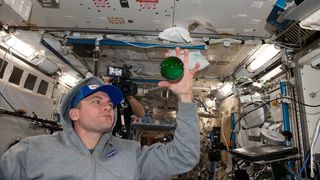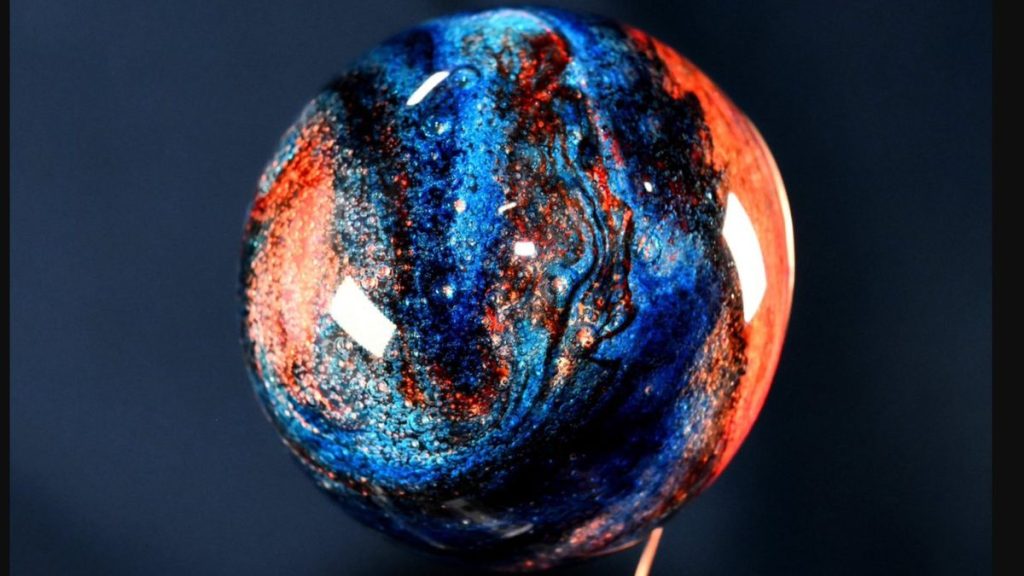An astronaut just created a colorful little world with the help of microgravity.
NASA astronaut Don Pettit used water and food coloring to make a “Jupiter-like planet” on the International Space Station. Bold orange, blue and red shine in the ball, which he captured on camera and posted on X, formerly Twitter.
Pettit added that he’s ready to keep experimenting in his spare time. “With Halloween coming up, I am going to see about making a jack-o-lantern,” Pettit wrote in his Sunday (Oct. 20) post.
Drops of water are popular play items on the ISS, given that they form spheres up there instead of drops. Because the orbiting complex is in constant freefall, the astronauts experience microgravity, and everything — water included — floats.
Related: ‘Spaceborne’: Astronaut Don Pettit’s amazing space photos (gallery)
The floating environment means all physical forces are treated the same, since there is no “gravity to tug downward,” the United States Geological Survey wrote of why water becomes a sphere in space. The water naturally collects into a shape that has the least surface area: a sphere.

On the commercial side, companies have been studying fluid behavior in microgravity to improve the performance of shampoo, medicine and even salad dressing, NASA officials wrote in a 2022 article. Even space systems benefit from more examination of fluids, since these are key to the operation of machinery such as reactors that purify water or air, the agency noted.
Two-phase reactor systems, such as between gas and a liquid, need some tweaking for more sustainable long-term astronaut stays on the ISS, and eventually on the moon and Mars.
“As we travel farther into space, reactor efficiency must improve,” NASA officials noted in the article, adding: “The space station … could enable scientists to increase the efficiency of life support systems.”

